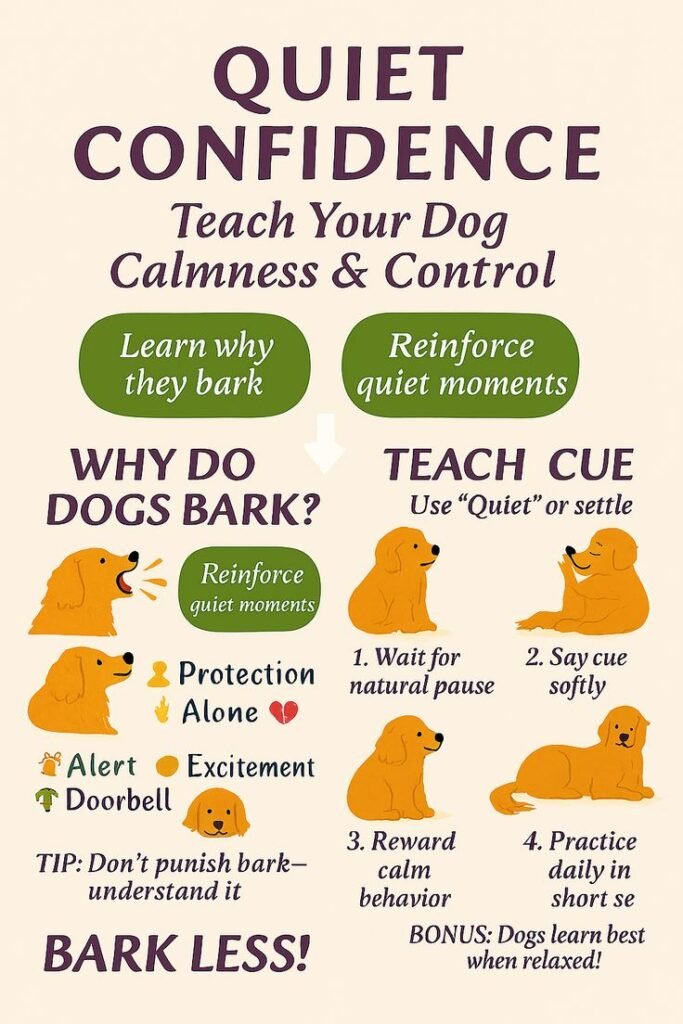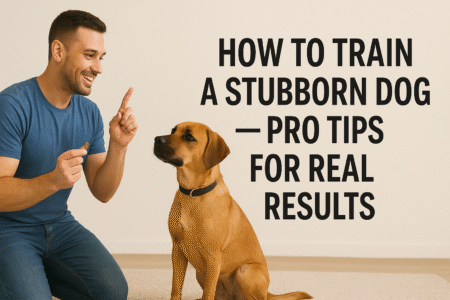Understanding Silence Training
Silence training is an effective method that helps dogs learn when it’s time to stop barking and remain calm. Barking is a natural behavior — dogs use it to express excitement, fear, or to alert their owners. However, constant barking can be frustrating. Through quiet command training, you can teach your pet to respond calmly when told to be quiet, improving both your home environment and your relationship with your dog.
Why Dogs Bark Excessively
Before beginning silence training, it’s essential to understand what triggers your dog’s barking. Common causes include boredom, separation anxiety, territorial instincts, or attention-seeking. For example, some dogs bark excessively when left alone or when hearing outside noises. Knowing the cause helps you tailor your dog silence training approach. For additional strategies to control barking, you can check out Ways to Stop Your Dog from Barking for helpful insights.
Preparing for Silence Training
Before teaching your dog the quiet command, ensure the environment is calm and free from distractions. Gather some of your dog’s favorite treats, as positive reinforcement will be your most powerful training tool. Make sure your dog already understands basic commands like “sit” or “stay.” These help establish structure and focus during the training sessions. Always remain calm, patient, and consistent — silence training requires repetition and understanding, not force.

Step-by-Step Guide to Teach the “Quiet” Command
- Encourage Barking: Gently trigger barking by knocking or ringing a bell. Let your dog bark a few times.
- Introduce the Command: Say “Quiet” in a calm, firm tone while showing a treat. Avoid yelling, as it may excite or confuse your dog.
- Reward Silence: When your dog stops barking, even momentarily, praise them warmly and give a treat.
- Repetition and Consistency: Practice this daily. Gradually increase the time your dog must remain quiet before receiving a reward. This helps them learn that silence is rewarding.
Using Positive Reinforcement
Reward-based silence training for dogs is the most humane and effective way to teach calmness. Dogs learn best when they associate good behavior with rewards. Never punish or scold your dog for barking — this can increase anxiety and worsen the issue. Instead, reward quiet behavior consistently. Over time, your dog will understand that obeying the “quiet” command leads to positive outcomes.
Common Mistakes to Avoid
Many dog owners make small mistakes that slow progress during quiet command training. Inconsistency is one of the biggest errors — sometimes allowing barking and other times scolding for it sends mixed signals. Also, avoid giving attention when your dog barks for it, as this reinforces the behavior. Stay consistent with your commands and timing, and always reward silence, not barking.
Reinforcing the Behavior in Different Situations
Once your dog responds to the quiet command at home, practice in other environments during walks, around guests, or near other dogs. Gradual exposure helps your pet learn to stay calm even when excited or distracted. Keep training sessions short, fun, and positive to ensure your dog stays engaged and motivated.
Benefits of Silence Training
The benefits of dog silence training go far beyond just stopping barking. It improves communication, reduces stress, and creates a peaceful atmosphere at home. A dog that responds to the “quiet” command is easier to handle in public and around guests. Moreover, the process of training strengthens your emotional bond with your pet, fostering mutual trust and respect.
Final Thoughts
Silence training helps your dog understand the right time to bark and when to stay calm. By using positive reinforcement, being patient, and practicing regularly, you can successfully train your dog to be quiet on command. Combine this with other helpful barking management tips, such as those found in Stop Dog from Excessive Barking, to achieve long-lasting results. With time and consistency, your dog will learn that silence can be just as rewarding as speaking up.



















Leave a Reply